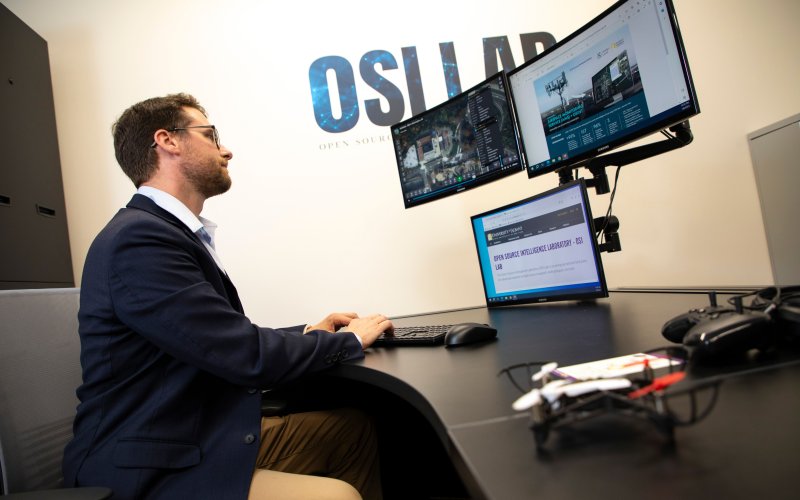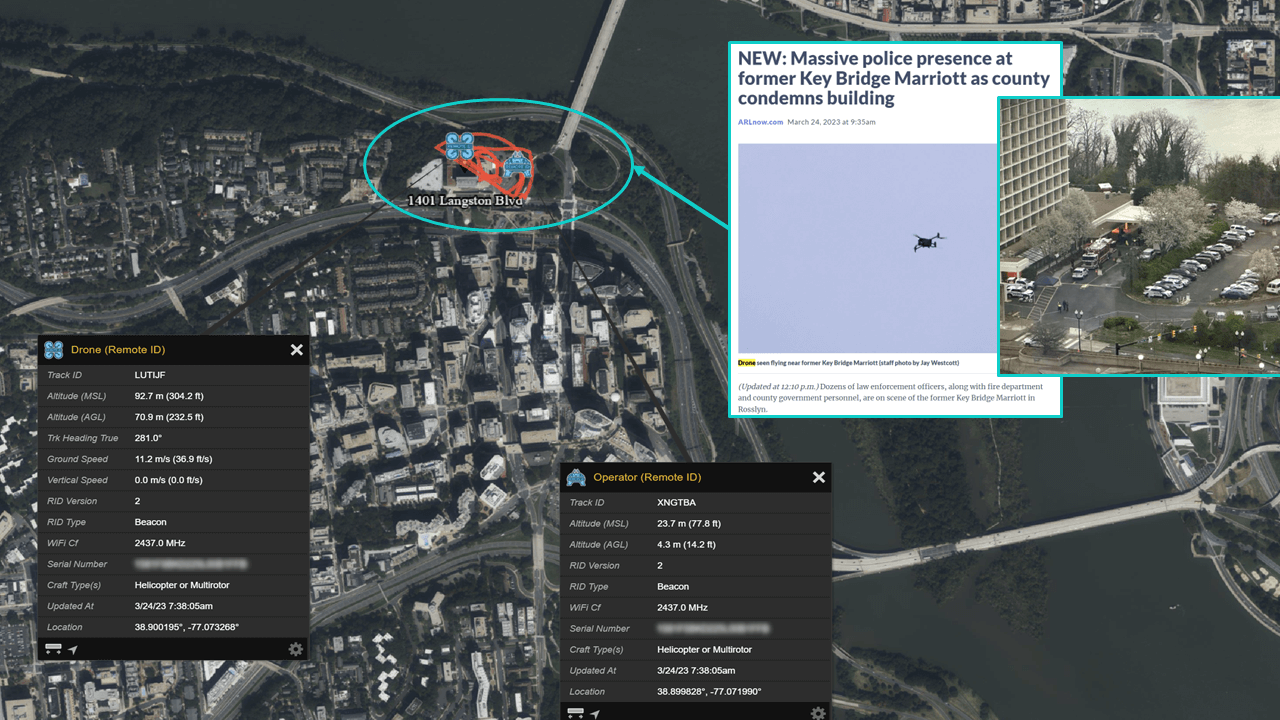CEHC’s Open Source Intelligence Lab Partners on New Drone Detection Software

By Mike Nolan
ALBANY, N.Y. (July 18, 2023) — Unmanned aircraft systems (UAS), better known as drones, have become part of our daily lives, with a host of applications including public safety, search and rescue, agriculture, health care, shipping and delivery, weather forecasting and much more.
Like most technologies, however, drones have a dark side and can pose a significant threat to privacy and government security — an issue that Stephen Coulthart of the University at Albany’s College of Emergency Preparedness, Homeland Security and Cybersecurity (CEHC) is aiming to help improve.
Through CEHC’s new Open Source Intelligence (OSI) lab, Coulthart is partnering with Hidden Level, a drone sensing company based in Syracuse, to create a software tool for the U.S. Air Force that can be used to mitigate UAS security risks and identify potential threats.
AFWERX, the innovation arm of the Department of the Air Force, selected Hidden Level last month to receive a highly competitive Small Business Technology Transfer (STTR) contract, which will support a Phase I proof-of-concept phase for the creation of the new security tool.
“With more commercial drones entering airspace, the risk of malicious uses of the technology continues to increase,” said Coulthart, director of the OSI lab. “Hidden Level has developed a sensor technology that is designed to track drones in the air, in real-time. However, we still do not know much about who is flying them and why. That’s where open source, and our lab, can help.”
Drone Threat Detection
Since 2018, Hidden Level has been building innovative sensor solutions for both military and commercial customers. Its Airspace Monitoring Service (AMS) is designed to detect drones in low-altitude airspace through sensor networks that are installed on existing infrastructure and designed to cover major metro areas.
Through the STTR contract, researchers at Hidden Level, in partnership with the OSI lab, are leading a three-month study to assess the feasibility of combining publicly and commercially available information with its real-time UAS detection data.

“The idea here is that we can locate drones in the air through the existing sensor technology, while also tapping into open source intelligence data derived from our lab, such as emergency responder broadcast traffic, news articles or any other relevant information that is available to the general public.
“There is nothing like this that currently exists on the market — in terms of combining a drone sensor network with OSINT to help assess potential security risks.”
Next Generation of OSINT Leaders
Coulthart, an associate professor in CEHC’s Department of Emergency Management and Homeland Security, researches intelligence analysis and the impact of emerging technologies on security.
In April, he launched the OSI lab, located inside UAlbany’s ETEC research and development complex, with an emphasis on developing and sharing best practices around OSINT.
The lab is also focused on preparing the next generation of homeland security professionals, including through the Hidden Level partnership.
“We plan to have CEHC student interns at the OSI lab actively involved in this partnership,” Coulthart said. “They are working with me to build the open source intelligence component of the tech, test the software and make updates as needed.”
The three-month feasibility study is running now, through Aug. 7, with additional support from UAlbany’s Office for Innovation Development & Commercialization and the SUNY Research Foundation.
If successful, the team next plans to create and test a software prototype.




